Recently, China’s 41st Antarctic expedition team successfully completed its summer mission and returned safely to Shanghai. Wang Bin, an associate researcher from the Department of Electrical Engineering and Applied Electronics (EEA) at Tsinghua University, participated in the expedition as the university’s sole representative. He played a key role in building the energy system of China’s new Antarctic Qinling Station, marking the first application of a large-scale clean energy system centered on renewable energy at a Chinese Antarctic research station.

With Original Aspiration, Venturing into the Frozen Realm
Antarctic scientific research is a crucial frontier in humanity’s quest to understand nature and explore new development spaces. Over 150 scientific research bases have been established by countries around the world, making the Antarctic a new strategic territory for global scientific exploration. Energy is the fundamental material guarantee for Antarctic expeditions. Currently, over 90% of energy used there comes from fuel, which is highly polluting, expensive, and unsustainable. There is an urgent need to harness local wind and solar resources to achieve safe and reliable clean energy supply.
The Antarctic is marked by harsh conditions—strong winds, extremely low temperatures, and blizzards—which make conventional clean energy equipment difficult to deploy safely. Safety incidents are frequent due to these limitations.
Qinling Station is China’s fifth Antarctic research station and the third permanent one. It is located in the Ross Sea area, a hotspot for Antarctic research and international governance. In 2024, President Xi Jinping sent a congratulatory letter to mark the station’s completion and operational launch, and referenced it again in his 2025 New Year address, praising the achievements of China’s polar exploration efforts.
Wang Bin joined China’s 41st Antarctic expedition at the invitation of the Chinese Polar Research Institute, supported by Professor Sun Hongbin—Chief Scientist of Polar Clean Energy, Tsinghua University professor, and President of Taiyuan University of Technology. Embarking on a 137-day expedition, Wang took part in the construction of Qinling Station’s energy system. From departing Guangzhou in late October 2024 to returning in late March 2025, he carried with him the resolve of “nothing ventured, nothing gained,” delving into the challenge of ensuring the reliability and safety of clean energy systems in extreme environments.
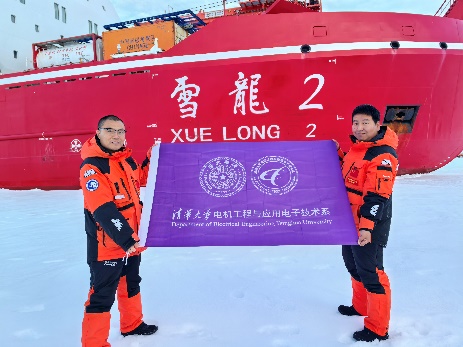
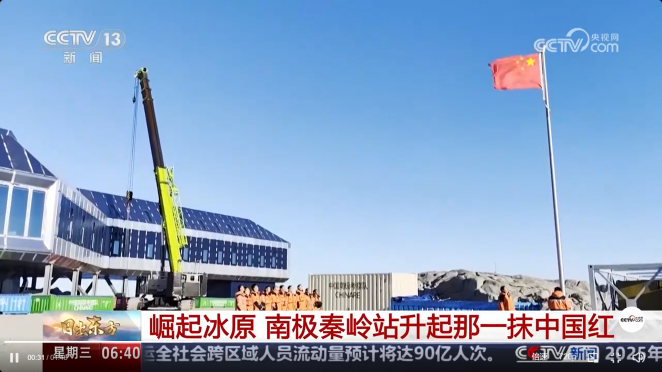
Battling the Elements to Overcome Clean Energy Challenges
Constructing a clean energy system in the Antarctic is extremely difficult. The main technical challenge lies in ensuring that every stage—generation, storage, and consumption—can withstand the continent’s remote and extreme conditions. This requires innovating upon conventional clean energy technologies. On the equipment level, innovations such as low-temperature batteries, wind-resistant turbines, and reinforced solar panels were employed to adapt to Antarctic conditions. On the system level, improvements included: optimizing water circulation processes for wastewater reuse, developing a dynamic control system for wind-solar-storage to stabilize power fluctuations, and designing a waste heat recovery and redistribution system to improve energy efficiency. These innovations helped address core issues of water shortage, power scarcity, and heating demand in the Antarctic.
During the 60 days spent working at Qinling Station—despite the Antarctic summer and 24-hour daylight—conditions remained harsh, with temperatures dropping to below -20°C and winds reaching Beaufort scale 9–10. To meet construction deadlines, Wang Bin and his team worked over 15 hours a day in the highest-altitude field energy zone. They pushed through physical and mental limits: When gloves made it impossible to screw in photovoltaic brackets, Wang removed them and used his bare hands. After two days, his fingers were cracked and frostbitten. He carried a 120-jin (60 kg) fuel cell inverter upstairs in a blizzard with bare hands. Within five minutes, his fingers froze to the metal and tore when removed—his teammate had to help detach skin from the device.
Despite these extreme challenges, Wang and his teammates pressed on. Upholding Tsinghua’s motto—“Self-discipline and Social Commitment”—they overcame both environmental and technical difficulties, assembling wind turbines, solar panels, hydrogen systems, and energy storage units. Their efforts enabled the first large-scale use of renewable energy at a Chinese Antarctic station, proving the feasibility of Tsinghua’s advanced energy technologies in one of the world’s harshest environments.
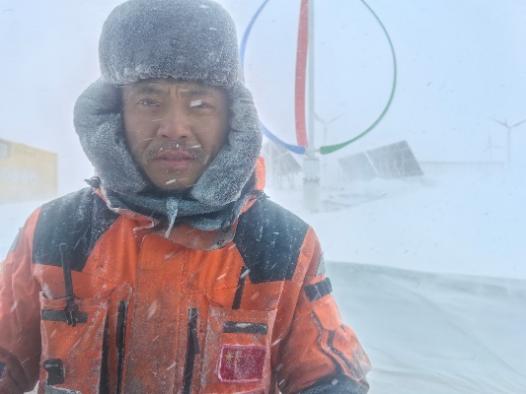
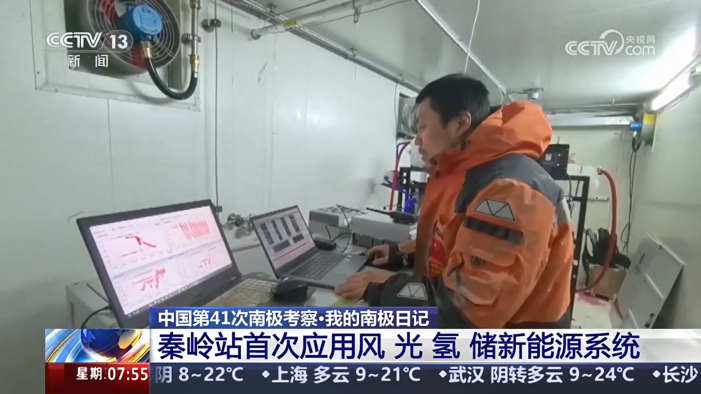
Life-or-Death Trial: Bearing Witness to the Power of Energy
Wang and his team didn’t just face physical hardship—they also faced life-threatening danger to fulfill their mission.
The most harrowing incident occurred on February 16, during a routine system test. A sudden storm brought 10-grade winds and a snow blizzard that buried roads and reduced visibility to less than 2 meters. Their compass failed. The camp—just 1 km away—became unreachable. Wang and two teammates took shelter in a temporary 20-foot container inspection room, their only refuge. With temperatures at -20°C and howling blizzards, they endured 24 hours waiting for rescue. The power line from the base’s logistics center became their lifeline—without power for more than 15 minutes, and the temperature would plummet inside the container. Wang kept in constant radio contact with the station leader to ensure uninterrupted power, while reinforcing insulation and troubleshooting electrical safety hazards under storm conditions. When the station leader finally drove through the snow, guided by the vehicle’s headlights, Wang and his team burst into tears of relief.


Looking Ahead: A New Chapter in Scientific Innovation
Research into clean energy for Antarctica is not only a scientific exploration of nature’s limits—it’s also a crucible for upgrading conventional energy systems. The extreme environment forces technological breakthroughs that can be adapted globally to boost energy resilience and address climate change. Yet Wang remains clear-eyed: this expedition is only the first step in a long journey toward implementing large-scale clean energy systems in Antarctica. Much research remains to be done, with many unresolved technical challenges. He looks forward to continuing collaboration with Tsinghua University, Taiyuan University of Technology, and other research teams to push this vision forward—making clean energy more reliable, scalable, and sustainable in Antarctica and beyond.
During his expedition, Wang penned a poem titled “Antarctica’s Green Dream: A Song of Ice and Fire” to express his hopes for the future:
With passion I explore the Southern land, Green energy ushers in a vision so grand.
Snow blankets Enbo as penguins glide, Fog lifts from Ross, hope at our side.
Brave scientists rise against the wind, Builders of dreams, their talents pinned.
Xuelong and Qinling forge ahead, Battling the skies, where heroes tread.
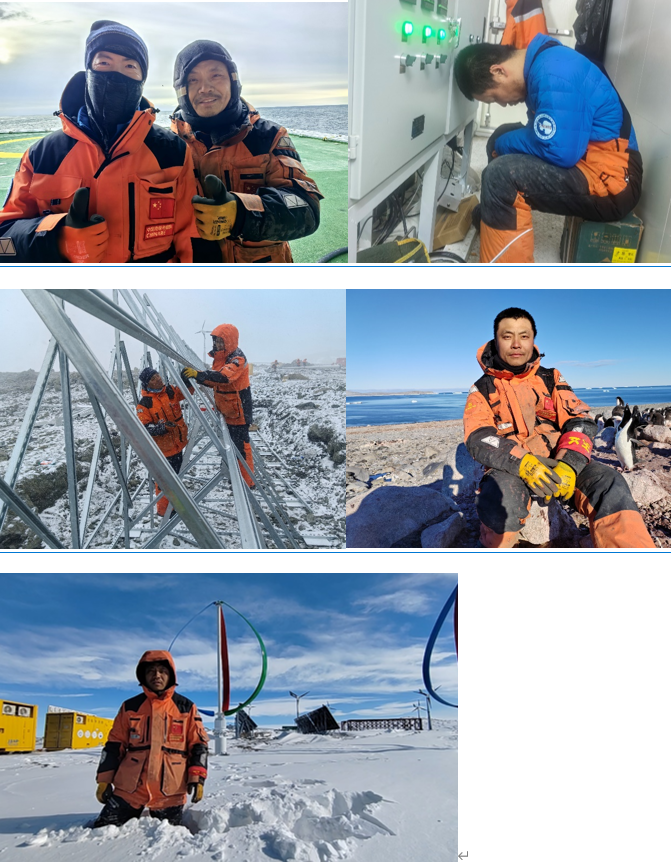
The road may be long, but action brings arrival. The dream may be distant, but pursuit makes it real. Wang Bin’s Antarctic journey embodies Tsinghua’s response to President Xi’s call to expand into the macro, delve into the micro, push the extremes, and integrate cross-disciplinary frontiers—to continually break the boundaries of human understanding. It is a living example of the "green expedition" initiative and a vivid reflection of China’s scientific community’s courage and innovation. Let us salute Wang Bin and his fellow Antarctic explorers, and look forward to greater achievements in Antarctic research and clean energy innovation. May the light of clean energy illuminate humanity’s path across the stars and seas.

About Wang Bin
Wang Bin is an associate researcher at the Department of Electrical Engineering and Applied Electronics, Tsinghua University, and a doctoral supervisor. He is a Young Changjiang Scholar of the Ministry of Education, an IET Fellow, and a Senior Member of IEEE. He serves as Executive Director of the Youth Working Committee of the China Energy Research Society and Deputy Secretary-General of the Active Distribution Network and Distributed Generation Committee of the China Electrotechnical Society. He has long been dedicated to the power systems field, with research achievements widely adopted in practice. His honors include one National Science and Technology Progress First Prize and ten provincial-level First Prizes. He has been recognized as an outstanding young talent by four national academic societies and has received the China Industry-University-Research Cooperation Innovation Award (2023) and the China Technology Market Association Golden Bridge Award (2024). As Tsinghua University’s sole representative, Wang was selected for China’s 41st Antarctic expedition, undertaking clean energy system construction at the Qinling Station.

















 News & Events
News & Events